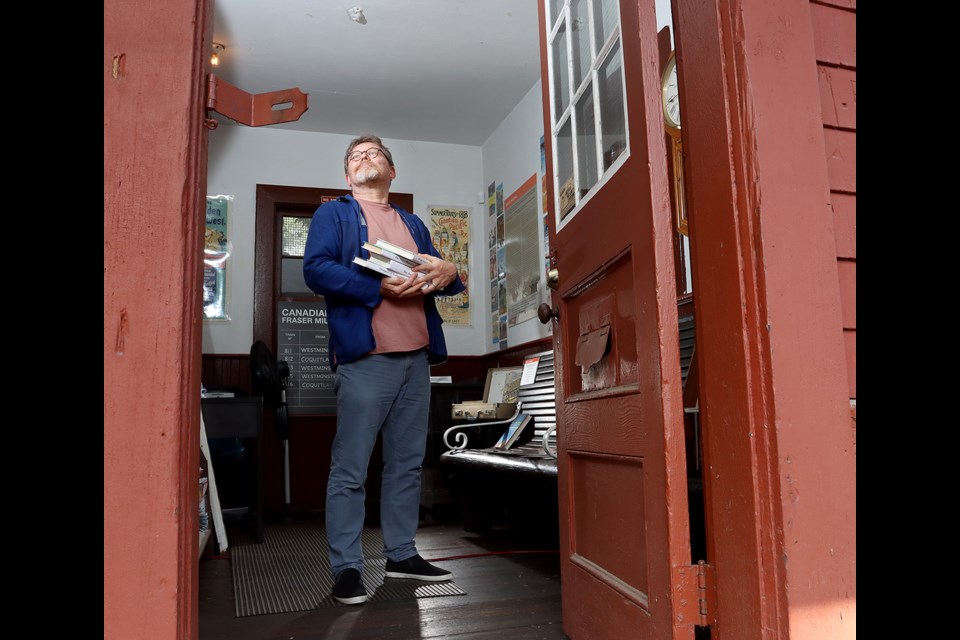After two years of hunkering down to ride out the COVID-19 pandemic, people are out and about again. So it’s only fitting that Coquitlam’s Mackin House Museum celebrate the reopening of its Fraser Mills train station with an exhibit about travel.
The display includes travel essays contributed by local authors and excerpts of travelogues written by a diverse selection of writers from around the world.
Markus Fahrner, Mackin’s heritage manager for exhibits, said the travel display is a bit of a coming out for the old train station.
“This is not an accident that it happens now,” he said.
In fact, the inability or overwhelming inconvenience of travelling the past couple of years has been one of the more difficult tolls exacted by the public health restrictions implemented around the world to try to limit transmission of the COVID-19 contagion.
Fahrner said he hopes the new exhibit will help “open conversations about the challenges of travel,” especially for people from other cultures who may not possess “the right passport.”
Looking at the world through their eyes is like “a mirror being up to all of us,” he said.
“You find new things about yourself. It becomes an inner journey.”
In its heyday, the little Fraser Mills station welcomed people from around the world, especially workers from South Asia and China arriving to toil at the nearby sawmills down by the Fraser River that were the economic engine of the Maillardville neighbourhood.
“Almost every journey began or ended in a train station,” said Fahrner, who recently joined the staff at Mackin House after a tenure at the Port Moody Station Museum which is located in an old CP Rail station building.
Sticking with the rail theme, the interior of the yellow CP Rail caboose that’s also on the grounds of Mackin House has been bolstered by new information panels and artefacts that help put the now-extinct tail end of long trains into the greater context of rail’s contribution to nation building.
Fahrner said jobs on the railroad were coveted not only for their ability to help see the country but also for the security offered by strong union representation that helped cultivate a diverse workforce including women and African-Americans.
Working in the tight confines of the caboose came with its own unique culture that included the slang and lingo used during radio communications, and even recipes to make the most of the limited food supplies that could be stored in the rolling home office and workshed. Some of those recipes can even be sampled with a quick scan of a QR code.
Fahrner said more than a way to transport people and goods, the railway influenced Canada’s landscape as it carved its way across the country, sometimes inadvertently transporting seeds and wildlife that would eventually be deposited in unfamiliar habitats where some were able to gain a foothold in new environs.
“The railway leaves a legacy,” he said.
The train station and caboose are open for the summer season beginning today (June 24).



